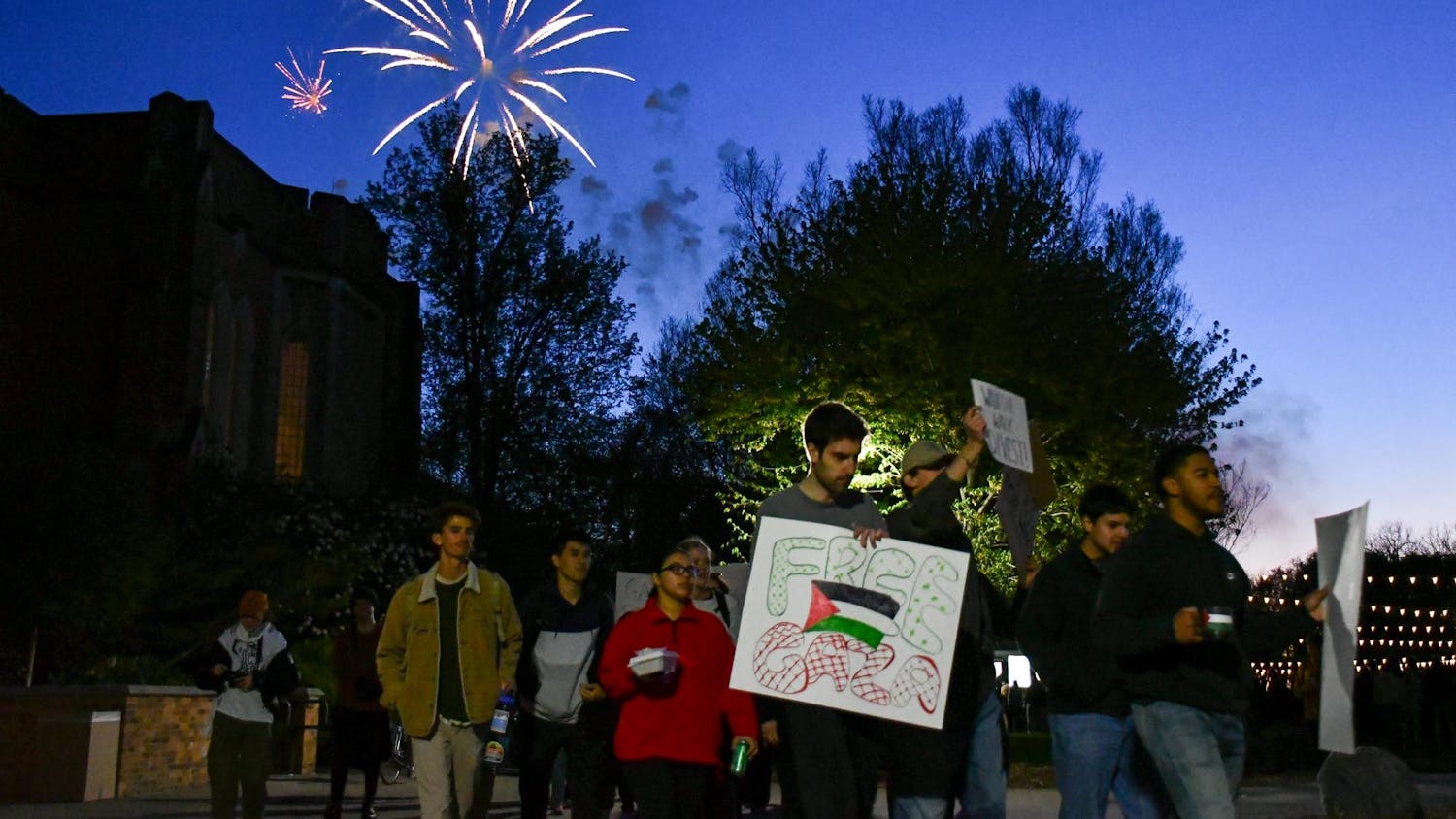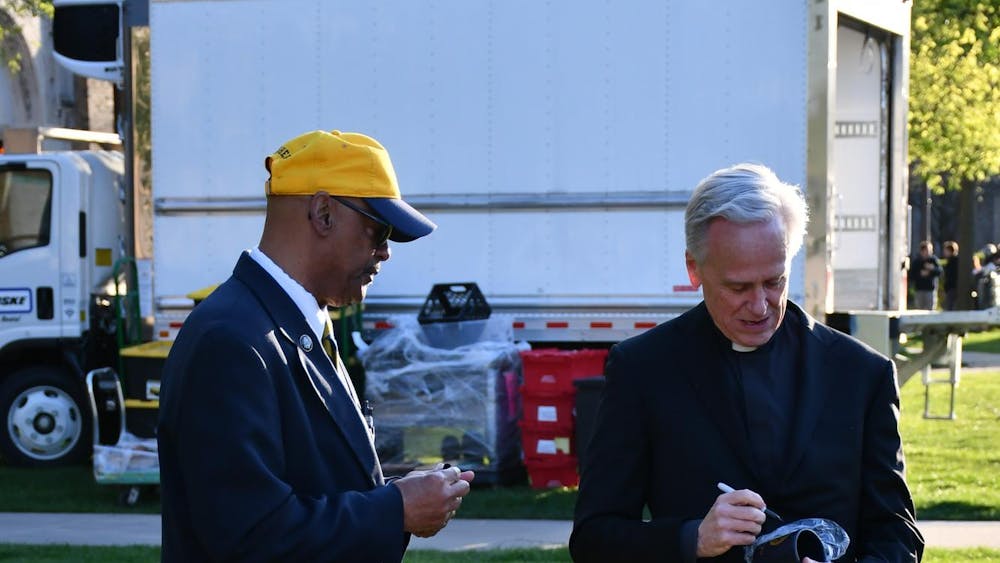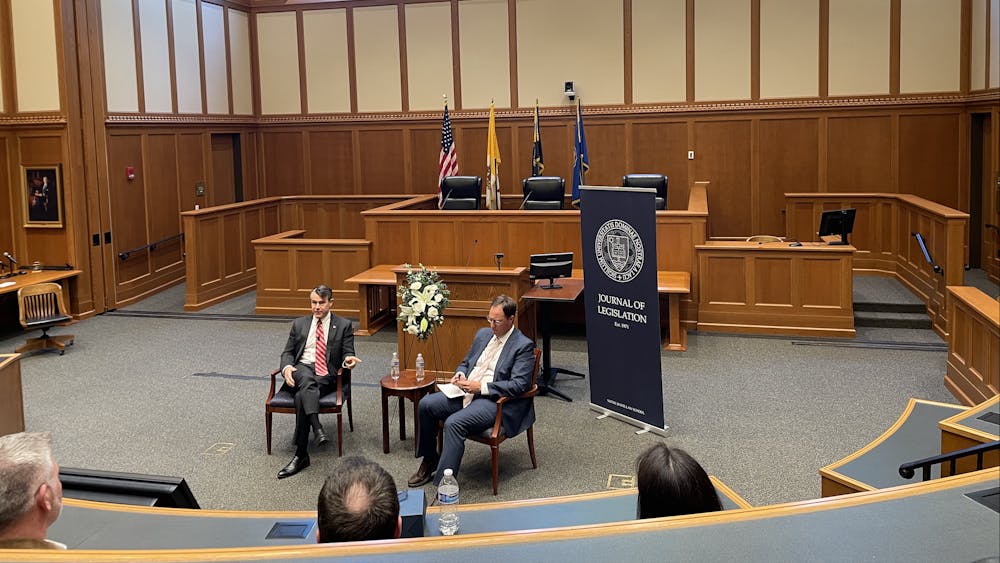Christmas is just around the corner in Notre Dame, and with Christmas comes buildings and residence halls decked with garland and lights. This Advent season, several buildings will be host to Nativity sets from Eastern Europe, known as “creches,” as part of McGrath Institute for Church Life’s fifth annual Creche Exhibit and Pilgrimage.
The pilgrimage begins at 2 p.m. Sunday when participants will gather at the Eck Visitors Center before setting out across campus. At each of the five sites, participants will listen to a passage from Scripture, sing Christmas carols and pray a decade of the Rosary before walking to the next site. The final site is the Administration Building, where a reception with cookies and hot chocolate will be held following the end of the pilgrimage.
Carolyn Pirtle, program director for the Notre Dame Center for Liturgy, said the McGrath Institute has partnered with the Marian Library at the University of Dayton to display the unique creches each year.
“We were fortunate to start this partnership five years ago and it’s just been really great in keeping every year different,” Pirtle said. “We bring 30 creches to campus every year and we’ve never brought the same creche because their selection is so vast. Every year has a little bit of a different theme. … This year they’re all from Eastern Europe. [It] gives a chance for people to see different artistic descriptions and experience the Nativity in a new way.”
John Cavadini, director of the McGrath Institute for Church Life, said the way each culture expresses the Nativity allows them to adapt the story in a unique way while maintaining its universal message of hospitality.
“The infant Jesus and his family have been welcomed in all cultures, and each culture has found a way of making the baby Jesus and his family at home in their culture,” Cavadini said. “All cultures of human beings can be and are in this instance cultures of hospitality. [The Nativity] gives you the sense that this a very universal thing. It’s so universal that it binds us all together, but it doesn’t homogenize us into only one culture. You can recognize in the hospitality of another culture the call to be hospitable yourself. So, there’s a kind of universality to it that bears witness to the unity of human culture.”
The setting aside of studying and other activities and instead engaging in a pilgrimage helps participants to learn about and interact with the coming of Christ, Pirtle said.
“[The pilgrimage] really provides a focus for what it is we are preparing for,” Pirtle said. “We’re preparing to celebrate the Incarnation when we celebrate Christmas, the coming of Christ as a child, the coming of Christ into our hearts and of course the coming of Christ at the end of time.
“[The pilgrimage] gives you a chance to step out of your normal life, to step out of the business and to step into something else, to step into this opportunity for prayer. And it’s not just you. You’re walking as one pilgrim among many, so it’s people that you would not necessarily see. We have people from different parishes who come from all over South Bend, we have students who come. So, it’s bringing different communities together around this central image of the incarnation and it’s allowing them to walk along side and to pray alongside people that they might not normally pray alongside.”
The pilgrimage allows members of the community to symbolically engage in a journey towards God, Cavadini said.
“There’s something about learning about what a religious procession is, learning about what it means to embark on a procession,” Cavadini said. “The procession is sort of symbolic of life as a journey to God. … In a sense we’re on this journey which is meditating on and thinking about a beautiful mystery from the Bible. It’s kind of like a journey to God. … You understand [the journey] better if you are doing something that embodies it, if you’re actually walking somewhere, if you’re saying prayers, if you’re seeing the mystery depicted in art and if you’re having fun.”
Cavadini said the creches share an element of God’s beauty with participants, and that just having them on campus is itself beautiful.
“I hope that the families get a kind of vision of beauty, of these really artistically beautiful creches which are trying to express the beauty in turn of the mystery of God’s becoming little for us,” Cavadini said. “I just kind of love the event. I feel like, having the creches even apart from the pilgrimage, it makes me feel like Notre Dame and we all as a community have made a home for the Incarnate Word. It feels like the community is graced with the Incarnation and that we’ve responded in a sense by making the baby Jesus at home here. I just love that idea.”













